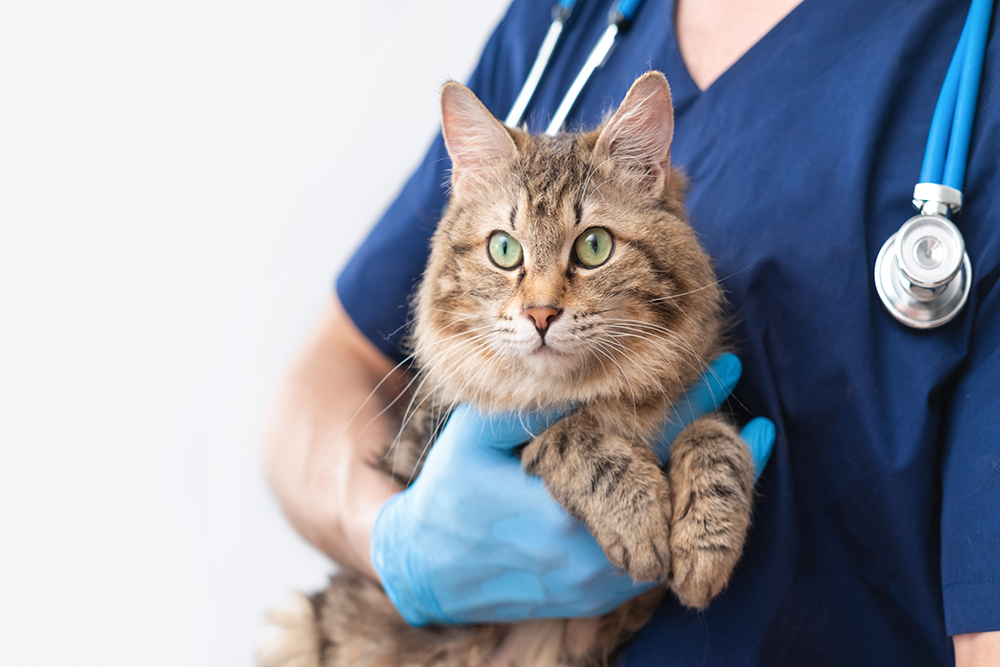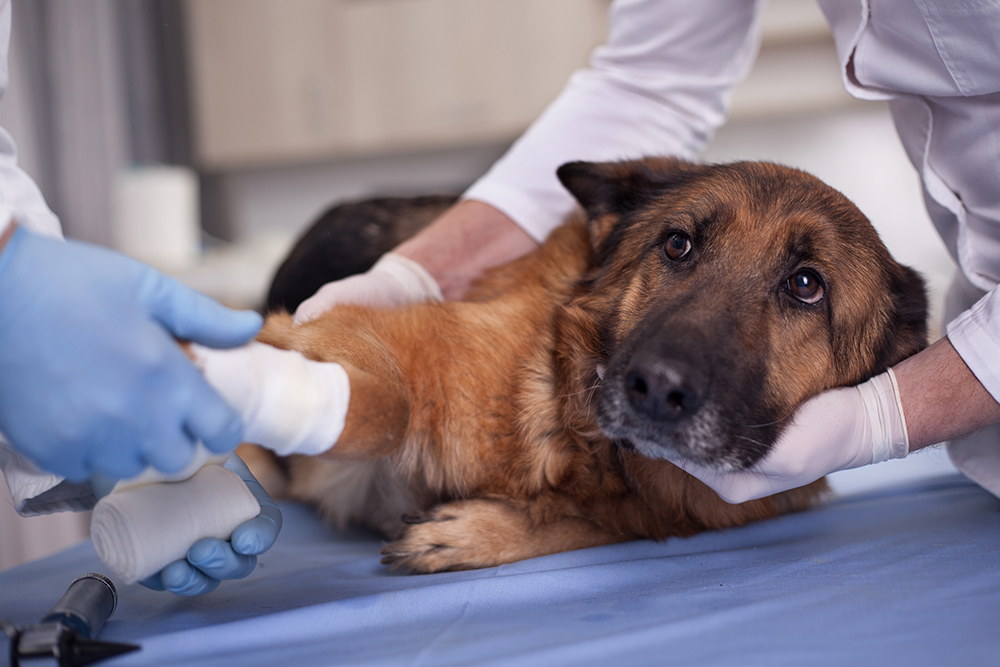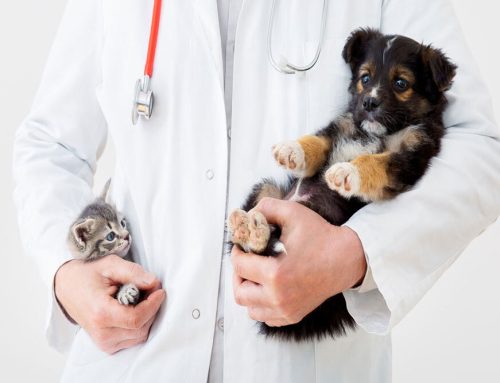Emergency Prep for Pets: Key Tips to Stay Ready
Woodland Springs Veterinary Hospital | Fort Worth, Texas
Emergencies rarely arrive with warning. One moment, a pet may be lounging peacefully, and the next, they’re struggling to breathe or showing signs of pain. For many pet owners, this abrupt change brings a flood of questions: Is this serious? What should be done first? Should this wait or is it urgent?
Understanding how to recognize a pet emergency- and how to respond- can make a significant difference in outcome. Pet emergency preparedness equips owners with the confidence and tools to take immediate, informed action when every minute counts.
What Qualifies as a Pet Emergency?
Veterinary emergencies can be dramatic or deceptively subtle. Obvious emergencies include injuries from accidents or visible bleeding, but less apparent symptoms can be just as serious. If you’re worried, it’s best to just call us at (817) 431- 3735- we’re here to help!
According to the AVMA emergency care list, symptoms that require immediate veterinary care include:
- Trauma from accidents or falls
- Seizures or tremors
- Labored breathing or respiratory distress
- Bloated abdomen, especially with restlessness or gagging
- Inability to urinate or straining
- Signs of poisoning
- Sudden disorientation or extreme lethargy
- Heatstroke or signs of hypothermia
Prompt recognition of these symptoms helps avoid delays in treatment, which can significantly affect the outcome.
Why Emergency Planning Matters for Pet Owners
Pet owners often report feeling overwhelmed or unsure when emergencies occur. This uncertainty is understandable. During a high-stress event, there is little time to search for information or locate supplies.
Being prepared means having a plan for where to go, what to bring, and what to do in those first critical minutes.
Emergency planning can:
- Speed up response times
- Reduce emotional distress
- Improve communication with veterinary teams
- Prevent complications through early intervention
- Increase safety for both pets and their owners
This preparation includes practical knowledge, a stocked emergency kit, and a clear understanding of what qualifies as urgent.
Home Assessment: First Steps to Take
Before heading to a veterinary clinic, a brief home assessment can help determine if the situation is critical. This also provides useful information for veterinary staff.
At-Home Evaluation Checklist:
| Check | What to Observe |
| Gum color | Pale, blue, or gray gums can signal poor circulation |
| Respiratory rate | Rapid or labored breathing indicates respiratory distress |
| Posture and movement | Reluctance to move, stiffness, or collapse |
| Behavior | Sudden hiding, whining, aggression, or confusion |
| Temperature | A normal pet temperature ranges from 101°F to 102.5°F |
More detailed guidance is available in the home exam resource for pet owners seeking to monitor vital signs accurately.
Building a Pet Emergency Kit
A well-prepared emergency kit should be easily accessible and updated regularly. It can buy time in urgent situations and support pets while awaiting care.
Emergency Kit Essentials:
- Gauze pads and bandages
- Pet-safe antiseptic wipes or saline rinse
- Digital thermometer
- Muzzle, leash, and towel or blanket
- Emergency contact list
- Printed medical history and vaccine records
- Tweezers and blunt-tip scissors
Kits should be reviewed every six months to replace expired items and ensure accuracy of records.
First Aid Skills Every Pet Owner Should Know
Veterinary first aid is not a replacement for professional care, but it can stabilize a pet while in transport or provide relief during minor issues.
Recommended Skills:
- CPR for dogs and cats: Understand chest compressions and assisted breathing.
- Choking response: Learn the canine Heimlich maneuver with this step-by-step guide.
- Bleeding control: Apply firm pressure with clean gauze and elevate if possible.
- Basic wound care: Rinse gently with saline and avoid alcohol or hydrogen peroxide.
- Heatstroke management: Cool the pet gradually and offer water, but do not use ice baths.
Hands-on instruction is available through pet first aid courses, which offer valuable training in emergency techniques.
Preventive Measures to Reduce Emergency Risk
While not all emergencies can be avoided, many are preventable through basic awareness and proactive habits.
Prevention Strategies:
- Pet-proof the home: Store medications, cleaners, and small objects safely.
- Supervise outdoor activities: Avoid off-leash time in unsafe areas or extreme heat.
- Maintain wellness care: Schedule regular veterinary exams and update vaccines.
- Microchip and tag pets: Ensure quick identification if a pet becomes lost.
- Know common toxin sources: Chocolate, grapes, xylitol, and certain plants are dangerous.
Explore additional preventive tips in this pet emergency prevention resource.
Frequently Asked Questions
How can a pet owner tell if the situation is an emergency? If symptoms are sudden, severe, or unrelenting, assume it is urgent. The AAHA emergency guide can assist with decision-making.
What should be done if a primary vet is closed? Have the contact information for the nearest emergency veterinary clinic saved in a mobile device and printed on a fridge or bulletin board. Our preferred emergency clinics can be found here.
Is it safe to give over-the-counter medications to pets? No. Human medications like ibuprofen and acetaminophen can be toxic to animals. Always consult a veterinarian before administering anything at home.
What role does documentation play during an emergency? Providing photos or video of symptoms can assist the veterinary team in understanding the progression of a condition, especially if symptoms come and go.
Taking the Next Step Toward Preparedness
Pet emergencies strike without warning, yet a solid plan transforms panic into decisive action. The experienced team at Woodland Springs Veterinary Hospital guides pet owners through every stage of care- prevention, treatment, and recovery- so clear answers are always within reach. To build a tailored emergency strategy or review early warning signs, reach out and set up a consultation today. We’re here to help!








Leave A Comment